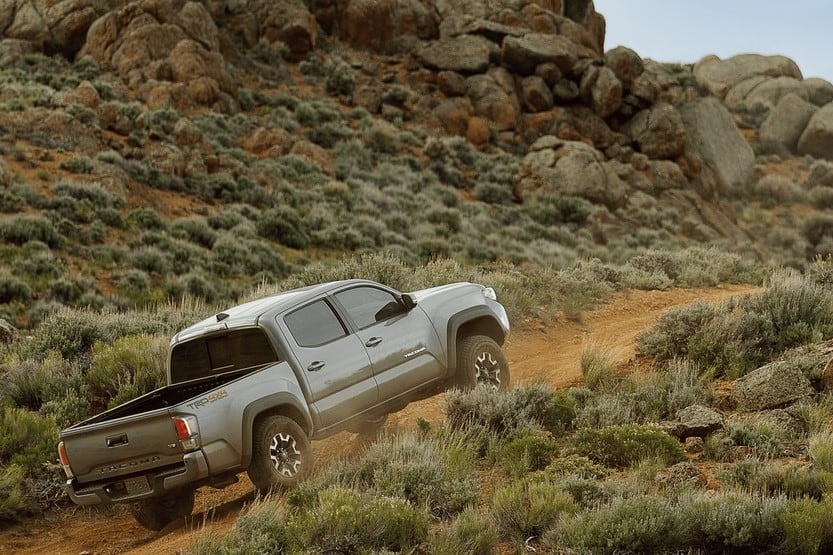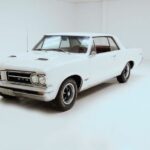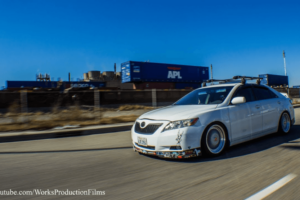Small Toyota trucks have evolved in major ways since Toyota launched its first pickup in the United States in 1968. Since then, they have been a leader in designing innovative, small pickup trucks. In this article, I’ll describe the various small Toyota trucks and their features.
What is the small Toyota truck called? Toyota has been selling the Hilux pickup trucks all over the world. In the U.S., this small truck was succeeded by what is now known as the Toyota Tacoma. These trucks are classified as compact trucks or, if bigger, as mid-sized trucks.
Read on to learn more about small Toyota trucks including their specs and features.

Small Toyota Trucks
Since 1968, Toyota has been selling small pickup trucks to consumers in the United States and other vehicles. It started selling the Hilux truck and its many variants in 1969. This small pickup has undergone many upgrades and modifications that made it more stylish, comfortable, and functional over the years.
The Tacoma is the latest offering of the Japanese carmaker Toyota in the U.S. in the compact and mid-size truck category. It is number 5 on the prestigious list of the best small trucks in the country for 2020. This small truck is a worthy successor to Toyota’s small trucks in the U.S. 30 years ago. Let us discuss the Toyota Tacoma in more detail.
Toyota Tacoma – The Small Toyota Truck in the U.S.
In modern terms, the Toyota Tacoma is classified as a mid-size truck. In the past, the term for this class of trucks was “compact-sized trucks.” Even if it is not as big as a real truck, it can do real heavy work.
Engine
A 3.5-liter V6 direct-injection engine powers the Tacoma. In this small Toyota truck, high-performance meets high-tech. This engine is the perfect combination of efficiency and power. It will provide you with more of everything that you may want.
Payload and Towing
When it comes to payload and towing, the Tacoma will be able to satisfy your needs. When towing boats or delivering tons of goods, this truck will enable you to bring them along. You can tow as much as 6,800 pounds with this vehicle. The bed of this truck can carry up to 1,440 pounds of payload. Just hitch it up, strap it down, and then roll out and start your ultimate adventure.
Additionally, your trailer will not sway to and fro along the highway, as the Tacoma is equipped with a trailer-sway control. This TSC feature applies brake pressure at each of the four wheels. The TSC is designed to manage the engine torque and to have full control of the trailer movements.
Off-roading
It is in its off-road capabilities where the Tacoma shows the way. You won’t get bogged down in the sand and other difficult terrains because of this truck’s crawl control feature. It is a feature that is standard in the TRD trims. This system modulates the brakes and the throttle on low-speed settings to keep you moving.
TRD Off-Road
The Tacoma has an electronically locking rear differential available on the TRD Off-Road. This feature can distribute the engine’s power evenly to the two rear wheels. The wheels can move at the same speed and provide additional grip in conditions where there is low traction.
Multi-terrain Select
You can take the challenge of different terrains with the Tacoma because of its Multi-terrain Select. There are five modes in this MTS that you can choose from. This system helps regulate the spin of the wheel by adjusting the traction and engine throttle automatically.
Multi-terrain Monitor
The Tacoma also has the Multi-terrain Monitor. This feature allows you to check the immediate environment for possible obstacles. Just press a button, and the 8-inch navigation screen will show you the rear, side, and front views of the surroundings.
Hill Start Assist Control
All decent 4x4s have the usual hill assist feature. The Toyota Tacoma has Hill Start Assist Control. This feature will minimize the vehicle’s rolling back when you move your feet from the brake to the gas. Moving uphill will be a lot easier if you use this feature.

Bilstein Shocks
All 4x4s should have dependable shock absorbers, which the Tacoma possesses. Its Bilstein Shocks deliver consistent performance, most especially in rough terrain. The high-performance components of these shocks and their tuned valves are specifically designed for off-road driving.
Dynamic Radar Cruise Control
For technology features, the Tacoma isn’t far behind its nearest competitors. A good tech feature of this truck is the Dynamic Radar Cruise Control. It enables you to drive the Tacoma at a preset speed from 25 to 110 miles per hour. This truck is also compatible with Apple CarPlay, by which you can get directions, send and receive messages, make phone calls, and listen to your favorite playlist.
Star Safety System
And last but not least is Tacoma’s safety feature. It has the Star Safety System – an advanced integrated system of safety technologies. It includes the following safety features:
- Anti-lock Brake System
- Brake Assist
- Electronic Brake-force Distribution
- Traction Control
- Smart Stop Technology
- Vehicle Stability Control
The dimensions of the 2020 Toyota Tacoma base model are as follows:
- Overall Length – 212.3 inches
- Height – 70.6 in.
- Width – 74.4 in.
- Wheelbase – 127.4 in.
The dimensions of the Tacoma SR5 are slightly different from the base model. They are the following:
- Overall Length – 225.5 inches
- Height – 70.6 in.
- Width – 74.4 in.
- Wheelbase – 140.6 in.
For the Toyota Tacoma TRD Off-Road, the dimensions are as follows:
- Overall Length – 212.3 inches
- Height – 70.6 in.
- Width – 75.2 in.
- Wheelbase – 127.4 in.
The other variants have almost the same dimensions, with some differences in wheelbase and overall length.
Previous Toyota Truck Models
It was about 60 years ago when Toyota was able to sell its first car in the United States. The first-generation Hilux pickup trucks were sold in this country in 1969. It was only in 1995 that the company launched the Tacoma. These small Toyota trucks have undergone numerous design upgrades, safety features, and engine modifications since then.
Here is a brief list of the Toyota pickup trucks as they made their journey that started in its initial launching in 1968-1969.
First Generation Toyota Hilux, 1969 to 1972
The initial launch of Toyota pickup trucks in the United States introduced the Toyota Hilux. It was powered by a 1.9-liter engine that can produce 84 horsepower. This truck has a short wheelbase and was only available as a rear-wheel-drive with a four-speed manual transmission.
Second Generation Toyota Hilux, 1973 to 1974
The second generation of Hilux Toyota small truck has a longer truck bed. The engine was a bit bigger than the previous generation at 2.0 liters. It produced 109 hp mated with the same standard four-speed manual transmission of the previous generation.
Third Generation Toyota Truck, 1975 to 1978
This truck sported a new design. It was also bigger than the previous models and equipped with a bigger engine. This truck had a slightly bigger 2.2-liter engine, but it was only able to deliver 97 hp. The bigger body structure and the heavier engine limited its power delivery.
Fourth Generation Toyota Truck, 1979 to 1983
It was only in 1979 when Toyota started selling trucks with four-wheel drives. But at that time, all Toyota trucks have 2.0-liter engines. No trucks have smaller engines than those engines. On the 2WD models, Toyota introduced the L Series with diesel engines in 1979. It was only in 1983 when Toyota 4WD trucks were equipped with diesel engines.
Fifth Generation Toyota Truck, 1984 to 1988

This generation was equipped with a 2.4-liter engine. Some trucks have a new 2.4-liter fuel-injected engine that can deliver 105 hp. Toyota implemented additional changes in the next truck generation. These changes included the Xtracab, an extended cab option of two rows.
Sixth Generation Toyota Truck, 1989 to 1994
The next Toyota truck generation again received a redesign. It had a longer wheelbase and a 3.0-liter V-6 engine. It was done to keep up with its rival Nissan, which already had been selling V-6 trucks. The Tacoma was able to get the “Truck of the Year” award given by Motor Trend in 1989.
First Generation Toyota Tacoma, 1995 to 2004
In 1995, Toyota finally decided to name its small Toyota pickup truck – the Toyota Tacoma. In the next decade, this truck proved its mettle in the market. Truck buyers latched on to this new generation because of its improved comfort and handling.
From 1995 to 2004, Toyota added several variants to the Tacoma lineup, including the Xtracab TRD and the PreRunner Xtracab.
Second Generation Toyota Tacoma, 2005 to the Present
This latest generation of the Tacoma received numerous awards from the car and truck industry. For instance, in 2005, the Tacoma X-Runner got the “Truck of the Year” award from Motor Trend. This variant had a 4.0-liter engine and a six-speed manual transmission. There were some additions to its standard and safety features later on. Toyota only made some major changes in the Tacoma in 2009.
Dimensions of the First Generation Toyota Tacoma
The first generation Toyota Tacoma was smaller and more compact than other truck models from other truck manufacturers. This truck was launched in the U.S. market in February 1995. The Tacoma replaced the previous generation of the Toyota Hilux.
There were three types of engines installed in this generation. They are:
- 2.4 L four-cylinder rated at 142 hp and 160 lb-ft. of torque
- 2.7 L four-cylinder rated at 150 hp and 177 lb-ft. of torque
- 3.4 L V6 rated at 190 hp and 220 lb-ft. of torque
Below is a table that shows the dimensions of the different variants of the first generation Toyota Tacoma.
| Model | Overall Length | Width | Height | Wheelbase |
| Regular Cab | 184.4 in. | 70.1 in. | 61.0 to 64.1 in. | 103.3 in. |
| Xtra Cab | 202.3 in. | 70.3 in. | 61.0 to 64.1 in. | 121.9 in. |
| Xtra Cab 4WD | 202.3 in. | 70.3 in. | 67.7 in. | 199.0 in. |
Dimensions of the Second Generation Toyota Tacoma
Toyota started to develop the second generation of Toyota Tacoma in the year 2000. Japanese truck manufacturer Hino accomplished the major developmental work. Toyota introduced the new Tacoma at the Chicago Auto Show on Feb. 4, 2004. It was bigger and more powerful than its predecessor.
It has three different cab designs, two engine options, two (2) bed length options, and four transmission options. The new Tacoma has a 4.0-liter IGR-FE V6 engine replacing the original 3.4-liter 5 VZ-FE V6 engine.
This truck now had 6,500 pounds towing capacity and 1,650 pounds payload capacity. The engine was able to deliver 236 hp and 266 lb-ft. of torque. The regular model was equipped with a 2.7-liter 2TR-FE 4-cylinder engine. It was able to produce 159 hp and 180 lb-ft. of torque.
The following table lists the dimensions of the representative variants of the second generation of Toyota Tacoma.
| Model | Overall Length | Width | Height | Wheelbase |
| Regular Cab 2WD | 190.4 in. | 72.2 in. | 65.7 in. | 109.4 in. |
| Access Cab | 208.1in. | 74.3 in. | 69.9 in. | 127.8 in. |
| Double Cab Long Bed | 221.3 in. | 74.7 in. | 70.1 in. | 140.9 in. |
Shield your truck from every kind of weather with our comprehensive guide to the top truck covers for outdoor storage in 2023.
Conclusion – Small Toyota Trucks
What is the small Toyota truck called? The small Toyota trucks launched in the United States in March of 1968 were called Toyota Hilux.
This vehicle belongs to the class of compact pickup trucks or mid-size pickup trucks. Toyota is still selling Hilux in other countries around the world. In the U.S., this small truck was succeeded by what is now known as the Toyota Tacoma.
Related reading:
Toyota Truck Models – Tacoma and Tundra [12 Types]
Small Pickup Trucks – 7 Best – U.S. Market
Toyota Camper Specs, Review, and History [Tacoma, Sienna, and more]
Full List of Dodge Truck Models

![Bobtail Truck [What Is It? Why Is It Called a Bobtail?] bobtail truck](https://roadsumo.com/wp-content/uploads/2021/06/bobtail-truck-150x150.jpg)
![What Is the Front of a Car Called? [All About the Front] what is the front of a car called](https://roadsumo.com/wp-content/uploads/2022/05/what-is-the-front-of-a-car-called-150x150.jpg)




![Read more about the article Toyota FJ Cruiser Towing Capacity [How Much Weight Can It Tow?]](https://roadsumo.com/wp-content/uploads/2021/05/fj-cruiser-towing-capacity-300x200.jpeg)

![Read more about the article 1st Gen Tacoma Specs and Review [1995-2004 Toyota Tacoma]](https://roadsumo.com/wp-content/uploads/2022/05/1st-gen-Tacoma-300x200.jpg)